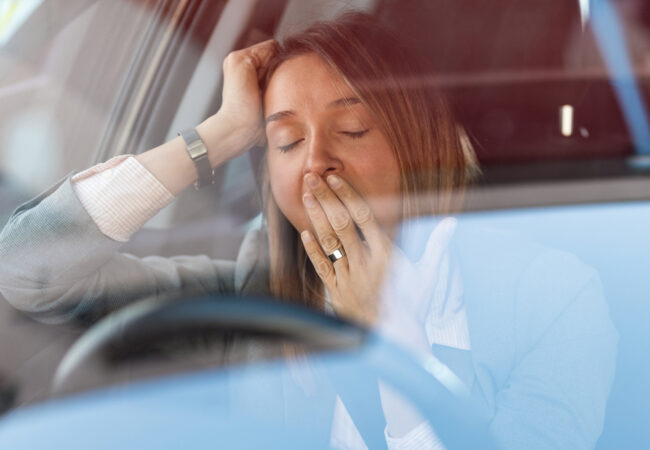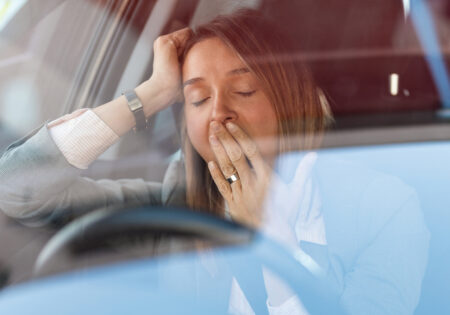
Fatigue is a factor in 1 in 5 road accidents and you’re 3x more likely to be in a crash if you’ve been awake for 17 hours.
Spotting the key signs of fatigue can go a long way to preventing these accidents:

The good news is there are some short-term fixes to minimise fatigue & keep you safe.
If you’re feeling tired, pull over somewhere safe as soon as possible. Then, try and have a nap of 15-20 minutes, or go for a walk.
But remember: the only real cure is proper sleep. We sleep in cycles of 90 mins. If you wake up naturally shortly before your alarm, it is generally better to get up and get on with the day.
Caffeinated drinks can help – the equivalent of two cups of coffee. But too much caffeine can also be detrimental to decision-making and driving.

To battle fatigue, use the acronym TENTHS to ensure you are sleeping well and are more alert when driving.
Temperature & Light
The optimal sleeping temperature is around 18°C. Most people sleep best in complete darkness, so try to make the area as dark as possible.
Exercise
Exercise releases endorphins which help reduce sleep disturbances. Any exercise is good, even taking stairs rather than lifts, or parking further away and walking more.
Nutrition
Eat often to beat tiredness. Foods with low carbohydrates such as nuts, oats, fruit, and cereals help to fight off fatigue.
Technology
Blue light from mobile devices before going to sleep stimulates the brain and boosts alertness while also suppressing the release of melatonin, which causes drowsiness. Avoid using screens before bed.
Hydration
For hydration, water is best. For every 2% dehydrated you become, you can lose up to 20% of concentration levels. Drink between 6-8 glasses
For more in-depth tips and detailed recommendations, download the full PDF guide. Stay informed and drive safely this summer!

Our On Road Driver Assessment is a half-day course that focuses on assessing a driver’s expertise in managing the high-risk environment of urban driving and reducing the likelihood of being involved in a preventable driving incident.
Our RED E-Learner modules are an integral part of our blended training programmes, providing regular content and training reminders to drivers of their responsibilities.